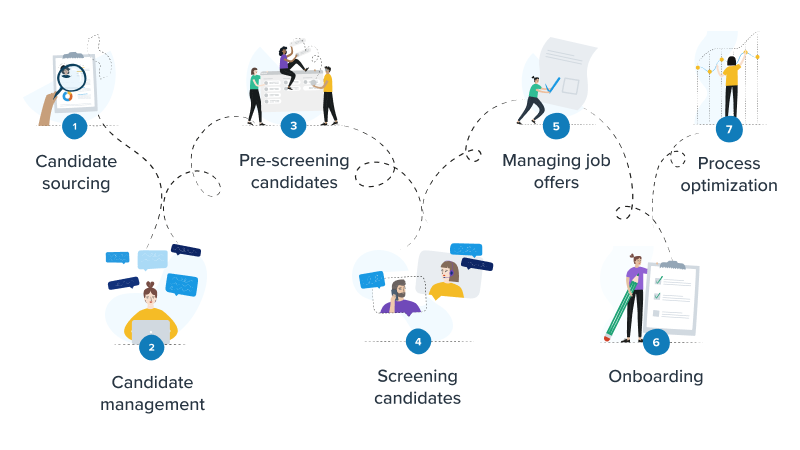The Ultimate Guide to Applicant Tracking Systems (ATS). An ATS is a software tool utilized by many employers and recruiters to streamline the hiring process. Essentially, it was created by HR professionals to simplify the screening and filtering of large volumes of applications. Examples of popular ATS platforms include Workday, SuccessFactors, Greenhouse, BambooHR, Bullhorn, Jobvite, and Taleo.
- 99% of the Fortune 500 use an ATS to filter resumes, 70% of larger companies, and 20% of SMBs.
- 75% of recruiters use a recruiting or Applicant Tracking System.
- 94% of recruiters say their ATS has positively impacted their hiring process.
How ATS Works – Guide to Applicant Tracking Systems (ATS)
Now, I will guide you through the key functionalities of an ATS.

- Resume Parsing: When job seekers apply for a position, they typically submit their resumes or CVs. The ATS utilizes a process called resume parsing to extract relevant information from these documents, including details such as work experience, education, skills, and contact information.
- Database Management: The extracted information is then stored in a database, creating a digital repository of candidate profiles. This database allows recruiters to easily search for and retrieve candidate information based on various criteria.
- Job Posting: Recruiters can use the ATS to create and post job listings on various platforms, including company websites, job boards, and social media. The system helps manage the publication of these job postings and ensures they reach a wide audience.
- Application Tracking: As candidates apply for a job, their information gets added to the ATS database. The system tracks the status of each application, from submission to review and interview scheduling, helping recruiters stay organized and ensuring no applications are overlooked.
- Candidate Communication: ATS often includes features for communication with candidates. Recruiters can send automated emails, updates, and notifications about the status of their applications. This helps in maintaining a positive candidate experience and keeps applicants informed throughout the hiring process.
- Screening & Evaluation: The ATS may have tools to screen and evaluate candidates based on predefined criteria. Recruiters can set parameters to filter out candidates who do not meet specific qualifications, making the shortlisting process more efficient.
- Collaboration: ATS facilitates collaboration among hiring team members. Recruiters and hiring managers can both access the system, share feedback, and collaborate on evaluating candidates.
- This promotes a more organized and collaborative hiring process.
- Reporting and Analytics: ATS often includes reporting and analytics features that provide insights into the recruitment process. Recruiters can analyze data on the effectiveness of job postings, time-to-fill, candidate sources, and other key metrics to optimize the hiring strategy
Let’s quickly discuss how ATS scans resume. I will explain this step-by-step.
Job seekers submit their applications, and the ATS extracts pertinent details from resumes, including work experience, education, and skills. The system compares this information with the keywords set by hiring managers. The system creates scores based on particular criteria like job experience, education, location, or other qualifications. Based on these scores, recruiters shortlist candidates and call them for an interview.
Is ATS a Resume Review & Rejection Tool?
Recruiters can use an ATS to automatically reject your resume if you don’t meet the necessary legal requirements. This can include factors such as citizenship/visa status, sponsorship, degree requirements, or commuting ability, and it’s all configured by the recruiter. If hiring managers don’t include these qualifiers, it won’t be the ATS rejecting your resume. It’s essential to understand that it’s the hiring managers making these decisions, not the ATS.
Overall, the goal of an ATS is to automate and streamline the recruiting and hiring process, making it faster, more efficient, and more effective.
For additional guidance on job search strategy or professional development, please explore more articles.




Add comment